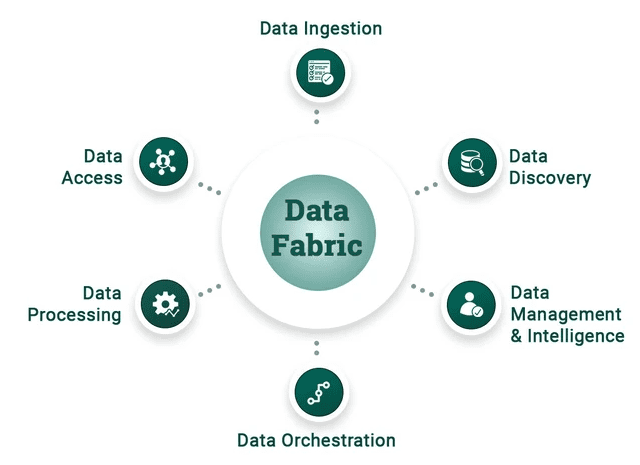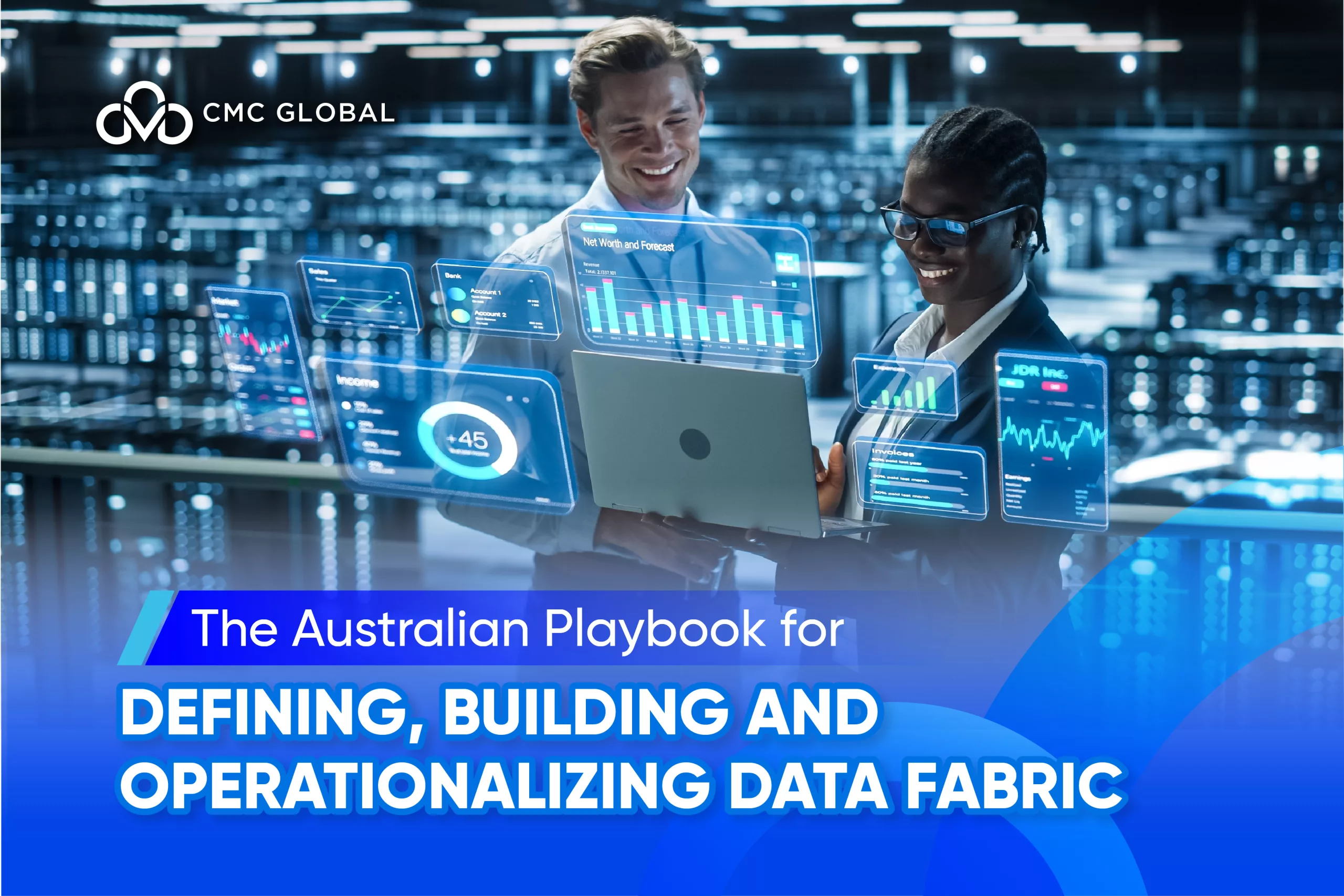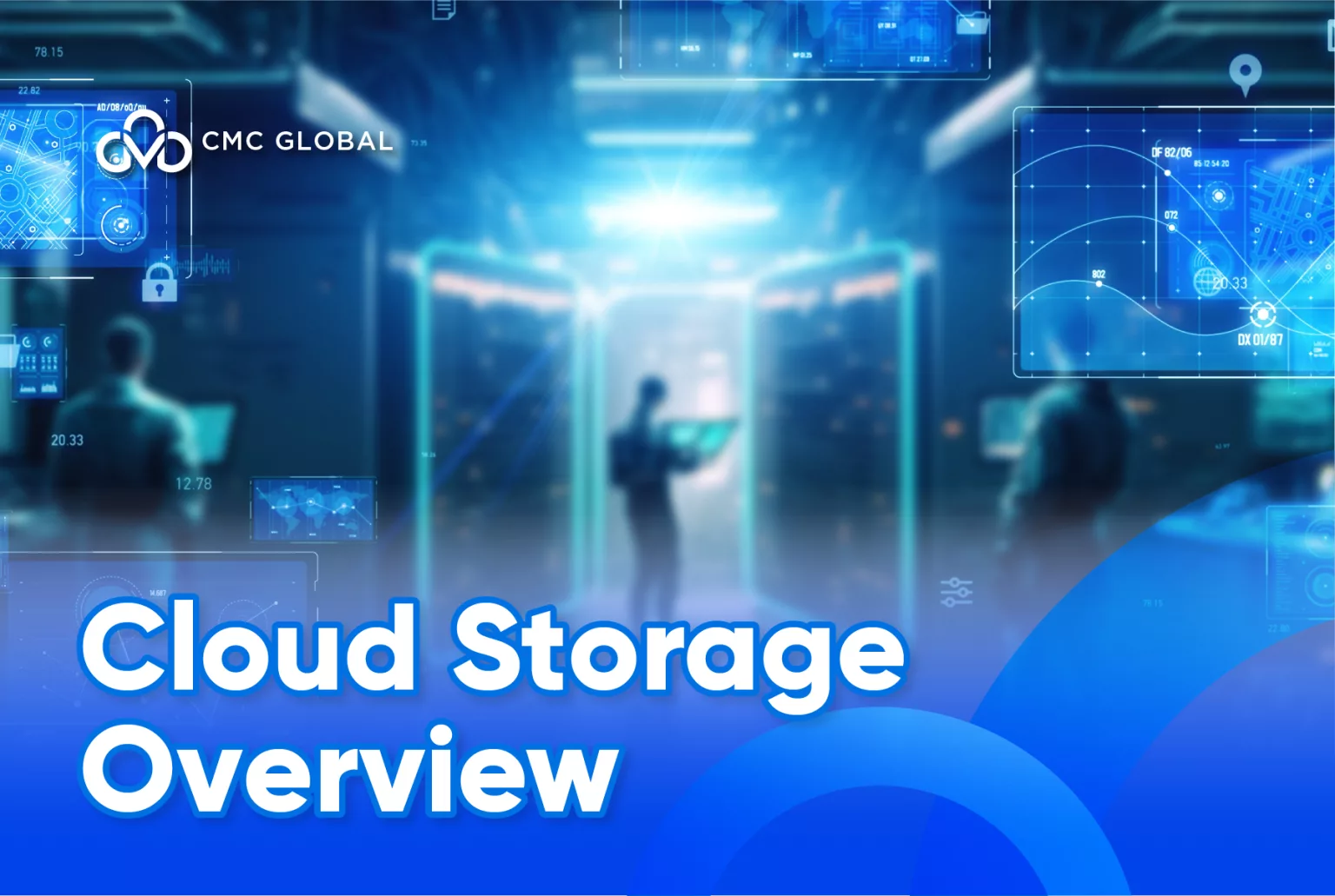In a recent discussion, Gavin Jones, Country Manager for Elastic in Australia and New Zealand, highlighted that Australia is falling behind in adopting generative AI. He also added that AI is only as effective as the data is trained on the business context it’s given, which is part of data maturity.
According to Deloitte, in Australia and New Zealand, Finance & insurance organizations have the highest levels of data maturity (with 50% achieving advanced/master levels).
One of the key tools to improve data maturity is implementing data fabric as it facilitates better access and usage of data, enabling organizations to become more data-driven and competitive in their respective markets. Let’s take a look at the concept of data fabric, how to build and operationalize it for your business.
Defining Data Fabric: Key Concepts Explained
A data fabric is an architecture and framework that facilitates the seamless access, integration, and sharing of data across an organization. It provides a unified platform for managing data across various environments, including on-premises, multi-cloud, and hybrid systems. The core objective of a data fabric is to create a consistent and connected experience for data consumers, regardless of where the data resides.

Gartner: A data fabric combines integrated data from multiple sources and delivers that data to multiple data recipients.
Key components of a data fabric include:
- Data management layer: This layer is responsible for data governance and data security.
- Data Ingestion layer: This layer begins to stitch together cloud data, looking for connections between structured and unstructured data.
- Data processing: The data processing layer refines the data to ensure that only relevant data is exposed for data extraction.
- Data Orchestration: This important layer performs some of the most important work on the data fabric—transforming, integrating, and cleansing data, making it usable by teams across the enterprise.
- Data Discovery: This layer exposes new opportunities to integrate different data sources. For example, it might look to connect data in a data mart supply chain and a customer relationship management data system, creating new opportunities for customer product offerings or ways to improve customer satisfaction.
- Data Access: This layer enables data consumption, ensuring appropriate permissions for certain groups to comply with government regulations. Additionally, this layer helps display relevant data through the use of dashboards and other data visualization tools.

Data fabric architecture
The How: 5 Steps to Construct a Data Fabric for Your Business
Building a data fabric requires a strategic approach to effectively integrate and manage data from diverse sources. In the following sections, we will outline five essential steps that organizations can take to build a robust data fabric.
- Data Integration:
Begin by integrating data from various sources into a centralized repository. Use ETL tools to extract data from different systems, transform it into a consistent format, and load it into a data lake or warehouse. Implement real-time data integration solutions to ensure that data is always up to date.
- Implement Metadata Management:
Metadata management is essential for maintaining data integrity and understanding the context of the data. Use metadata repositories to store information about data lineage, definitions, and quality metrics. This transparency helps users understand the data they are working with, and fosters trust in the data.
- Orchestrate Data Workflows:
Automate data workflows to improve efficiency and reduce manual errors. Use orchestration tools to schedule data processing tasks, monitor data quality, and trigger alerts for anomalies. This ensures that data is available when needed and meets the required quality standards.
- Enable Self-Service Access:
Empower users by providing self-service capabilities for data access and analysis. Implement data catalog tools that allow users to search for and discover relevant data. Providing user-friendly interfaces and dashboards can help non-technical users gain insights without relying on IT teams.
- Focus on Security and Compliance:
Data security and compliance are paramount when building a data fabric. Implement role-based access controls, encryption, and data masking to protect sensitive information. Regularly review compliance with data regulations (such as Privacy Act, APP Australian Privacy Principles (APPs), Consumer Data Right (CDR) to ensure that the organization meets legal requirements.
Bringing the Fabric to Life: 5 Steps to Operationalize Your Data Fabric

- Continuous Monitoring and Maintenance:
Once the data fabric is operational, continuous monitoring is crucial to ensure its effectiveness. Implement monitoring tools to track data quality, performance, and user engagement. Regularly review and update data governance policies to adapt to changing business needs.
- Train and Educate Users:
Invest in training programs to ensure that users understand how to leverage the data fabric effectively. Provide resources, tutorials, and workshops to promote data literacy across the organization. A well-informed user base can drive the adoption of the data fabric and maximize its value.
- Foster a Data-Driven Culture:
Cultivating a data-driven culture is essential for the success of a data fabric. Encourage collaboration between departments and recognize and reward data-driven decision-making. When employees see the value of data insights, they are more likely to embrace the data fabric.
- Iterate and Improve:
A data fabric is not a one-time implementation but an ongoing process. Regularly solicit feedback from users to identify areas for improvement. Analyze the effectiveness of data-driven initiatives and adjust strategies as needed. This iterative approach ensures that the data fabric remains aligned with business goals.
- Leverage Advanced Analytics and AI:
As the data fabric matures, organizations can leverage advanced analytics and artificial intelligence (AI) to derive deeper insights. Implement machine learning models to identify patterns, predict trends, and enhance decision-making processes. This can drive further value from the data fabric and elevate organizational performance.
Leveraging CMC Global’s Expertise in Data Fabric and RPA Solutions for Business Growth
Building and operationalizing a data fabric is a strategic initiative that can transform how organizations manage and utilize their data. By defining clear objectives, investing in the right technology, and fostering a data-driven culture, organizations can create a robust data fabric that not only improves data access and integration but also drives innovation and growth.
With a proven track record in delivering cutting-edge data and RPA (Robotic Process Automation) solutions, recognized by the prestigious Asian Technology Awards, CMC Global offers the expertise and technology required to create a robust data fabric. By defining strategic objectives and fostering a data-driven culture, CMC Global helps organizations improve data integration, drive innovation, and achieve sustained growth in today’s complex data environment.
Contact us for further details!




